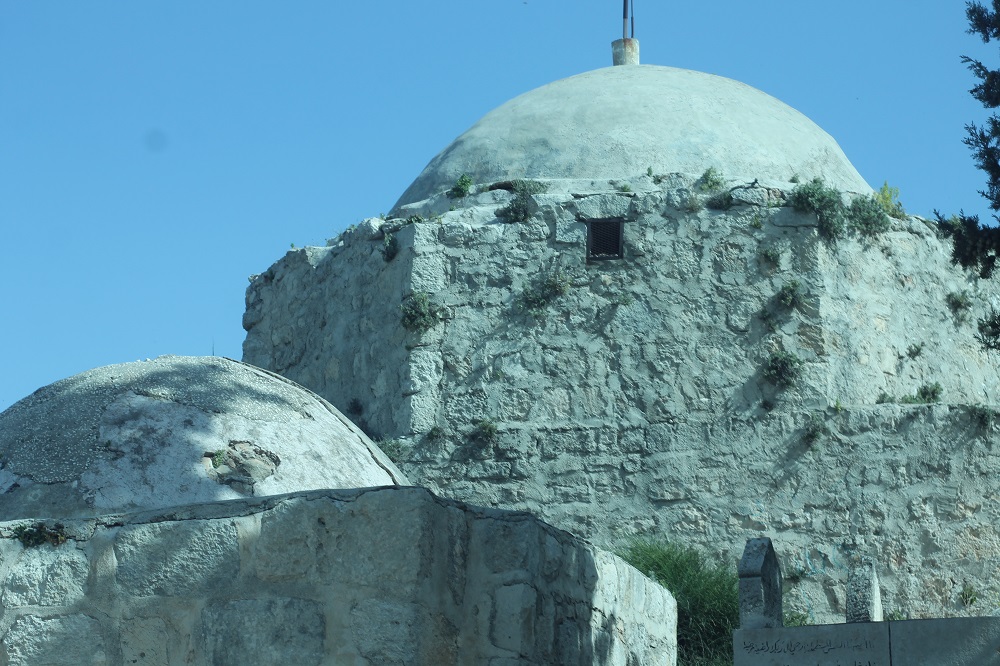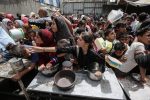As soon as you enter the town of Awarta to the southeast of Nablus in the West Bank you could see the ruins of its Old Town which has been vandalized and abandoned. Most houses have been abandoned and weeds fill the place drawing a spectacular scenery which is a witness to an old civilization that once stood there. There several shrines of Muslim fighters or prophets became the target of Jewish settlers’ greed.
Since the beginning of this year 2018 the town has seen more than 7 visits by settlers to these shrines some of which were attended by a thousand settlers amid savage behavior that continued until the early morning hours.
Tombs of prophets
Historian Abdel Salam Awad says that the graves in the town are: Al-Azir located about half a kilometer to west of the town which is a large shrine and the shrine of Sheikh Mansouri a large shrine located in the courtyard of the town’s mosque and Sheikh Al-Moufadal a large shrine located to the north of the town while Alazizat shrine is made of two rooms each one of which is topped by three domes.
He points out that 70 Muslim fighters or prophets are buried in this place. He quotes traveler Sheikh Abdul Ghani Nabulsi who mentioned in his journey to the town of Awarta in 1101 AH ‘We entered a mosque in which a cave is said to have the bodies of forty prophets. We prayed there and made many prayers.”
Awwad quotes historian Yaqout who died in 626 AH speaking of the town of Awarta as saying “It is a small town in the vicinity of Nablus where the grave of the prophet Al-Azir is found in a cave as well as the tomb of Joshua bin Nun and Mufaddal Harun and it is said that seventy prophets are buried there.”
Adjacent to the town of Awarta there is a historical hamlet: Khirbet al-Ras the site of Al-Azir which is mentioned above that also contains the foundations of walls stone piles collapsed buildings caves engraved in rocks. There one could find Khirbet Hayya which is located to the east of Awarta where ruins could be found too as well as Khirbat Al Shararabah and Shurab which are located northeast of Awarta.
Archaeological sites
Amjad Qawariq a member of the town’s local council said that there is an interest in all historical sites in the town including shrines. He noted that the council is ready to work will all concerned parties especially Waqf to take care and restore them.
He added that “the great danger to the shrines lies in the continuation of raids of (Jewish) settlers and their attempt to falsify history. His opinion is also shared by member of the local council Nasri Lulah who said that the historical sites in the town receive a special attention as part of the overall work of the town’s council which came to office following the most recent elections. There is an intention to bring about changes on the ground to maintain and preserve historical sites.”
Ghaith Azem a tour guide of the Abraham Path said that the town of Awarta is part of the route of the Path that starts from the town of Rumaneh in the Jenin district and ends south of Hebron starting from the outskirts of the town of Awarta through Jabal Alarma Bani Fadel all the way to the town of Douma.
He pointed out that shrines in Awarta are subject to attacks by settlers as well as thieves who steal monuments.
Ghaith pointed out that there is an increase in the number of visitors to the town of Awarta in light of the increasing number of tourists who visit the Path of Abraham.
The total area of Awarta is 26000 dunums with 70% of its land confiscated by Israel and its population is approximately 7400 people.














